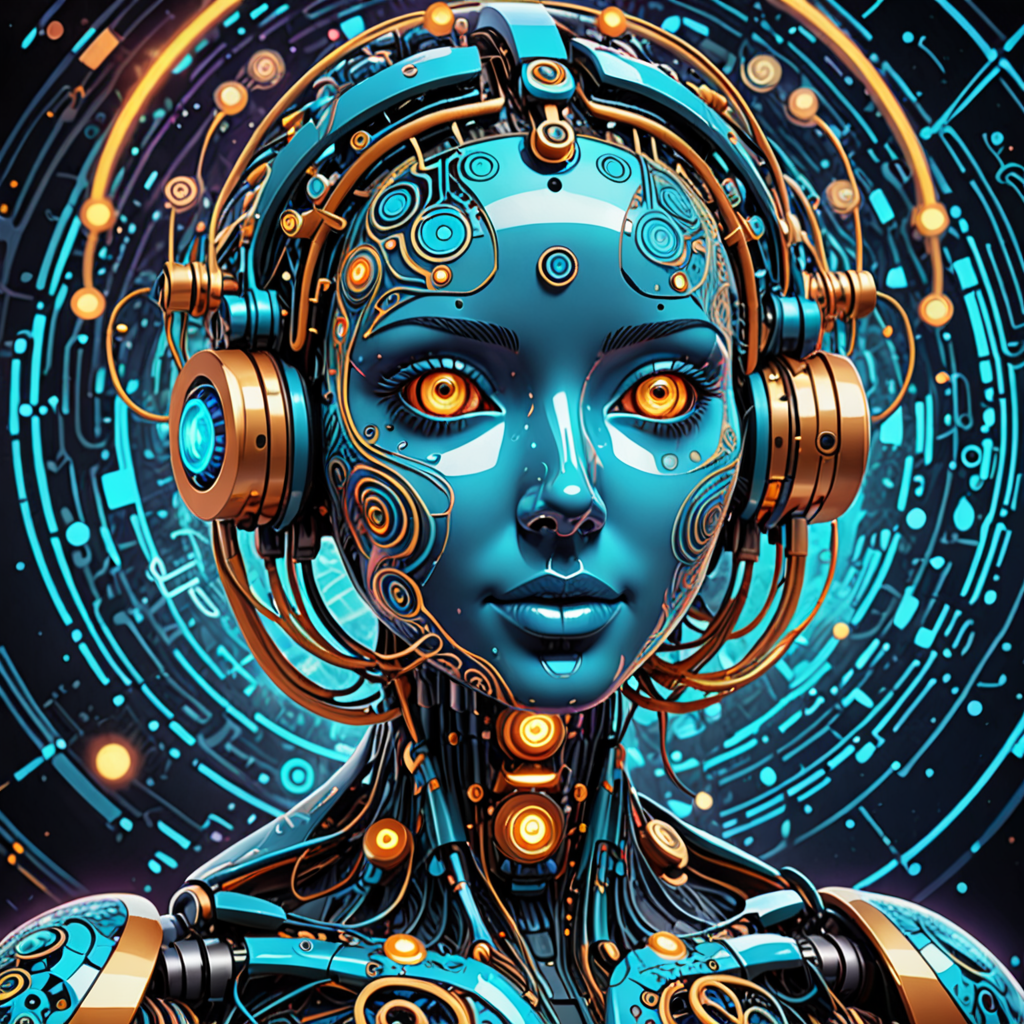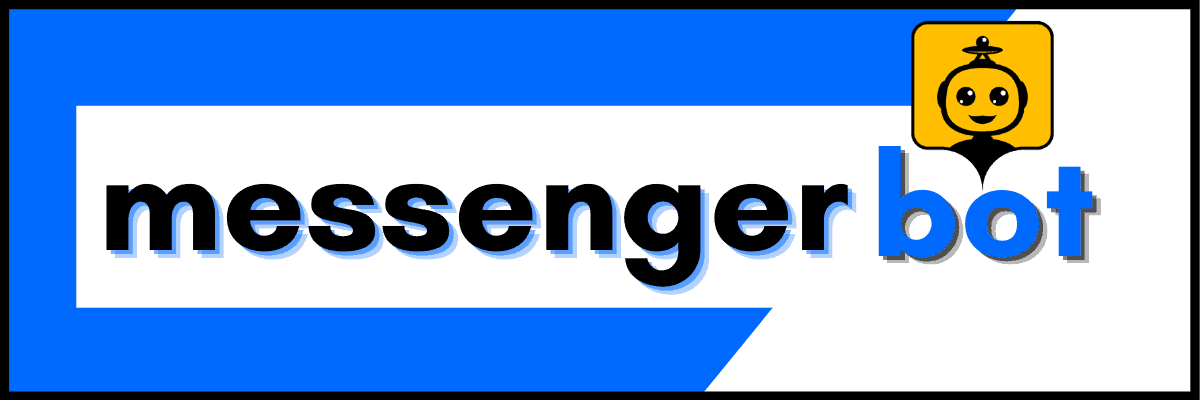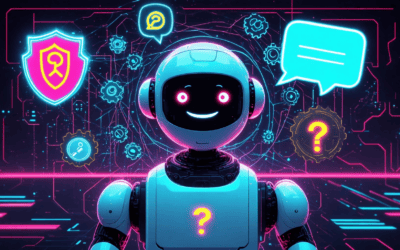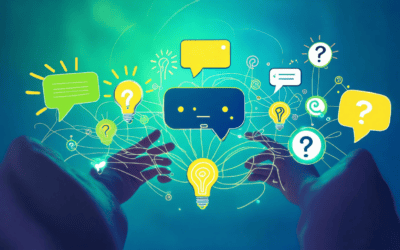In today’s digital landscape, creating an engaging chatbot persona is essential for enhancing user interaction and satisfaction. A well-crafted chatbot personality not only makes conversations more enjoyable but also improves the overall effectiveness of virtual assistant technologies. This article will delve into the intricacies of developing a captivating chatbot persona, exploring key elements such as the importance of personality in chatbots, the steps to create a persona bot, and the various types of chatbots available. We will also clarify the distinctions between personal AI assistants and chatbots, providing insights into how these technologies can be tailored to meet user needs. By the end of this guide, you will understand how to give your chatbot a unique voice and personality, ultimately transforming the virtual assistant experience for your users. Join us as we uncover the secrets to building a successful chatbot personality that resonates with your audience and drives engagement.
How to Give a Chatbot a Personality?
Understanding the Importance of Chatbot Personality
Creating a distinct chatbot persona is crucial for enhancing user engagement and satisfaction. A well-defined personality helps users connect with the chatbot on a more personal level, making interactions feel more human-like. This connection can lead to increased trust and loyalty, ultimately benefiting businesses by improving customer retention and conversion rates. By incorporating elements such as emotional intelligence and conversational design, we can ensure that our chatbot voice assistant resonates with users, creating a memorable experience that stands out among chatbots examples.
Key Elements to Consider When Designing a Chatbot Persona
To give a chatbot a personality, consider the following comprehensive strategies:
- Define the Target Audience: Understand the demographics, preferences, and behaviors of your users. Conduct surveys or analyze user data to create a detailed user persona that reflects your ideal customer.
- Character Development: Create a character profile for your chatbot. This should include:
- Name: Choose a relatable name that resonates with your audience.
- Backstory: Develop a brief backstory that gives context to the chatbot’s personality, making it more relatable.
- Tone and Voice: Decide on the tone (formal, casual, humorous) and voice (friendly, authoritative) that aligns with your brand and audience expectations.
- Emotional Intelligence: Incorporate elements of emotional intelligence into the chatbot’s responses. Use natural language processing (NLP) to recognize user emotions and respond appropriately, enhancing user engagement.
- Conversational Design: Structure interactions to mimic human conversation. Use open-ended questions, active listening techniques, and personalized responses to create a more engaging dialogue.
- Consistency: Ensure that the chatbot maintains a consistent personality across all interactions. This includes consistent language, tone, and behavior, which helps build trust and familiarity with users.
- Feedback Loop: Implement a system for gathering user feedback on the chatbot’s personality. Use this data to refine and adjust the character traits and conversational style over time.
- Testing and Iteration: Regularly test the chatbot with real users to observe interactions and gather insights. Use A/B testing to compare different personality traits and identify which resonates best with your audience.
- Cultural Sensitivity: Be aware of cultural differences that may affect how personality traits are perceived. Tailor the chatbot’s personality to be inclusive and respectful of diverse backgrounds.
By following these strategies, you can create a chatbot that not only engages users effectively but also reflects a well-defined personality that enhances the overall user experience.

“`html
How to Create a Persona Bot?
Creating a chatbot persona is essential for enhancing user engagement and ensuring effective communication. A well-defined chatbot personality not only improves user experience but also aligns with the brand’s voice and objectives. Below are the key steps to develop an engaging chatbot persona.
Steps to Develop an Engaging Chatbot Persona
- Define the Purpose of Your Persona Bot
Identify the primary function of the bot (e.g., customer service, entertainment, education). This will guide the tone and personality you want to convey. - Research Your Target Audience
Conduct surveys or analyze user data to understand the preferences, needs, and pain points of your demographic. Tailoring the bot’s persona to resonate with users increases engagement. - Develop Key Personality Traits
List adjectives that describe your bot’s personality (e.g., friendly, professional, humorous). Aim for 3-5 core traits that will shape its interactions. - Create a Unique Name
Choose a name that reflects the bot’s personality and purpose. A memorable name can enhance user connection and recall. - Design Visual Elements
Incorporate a profile picture or avatar that aligns with the bot’s persona. Visual representation can significantly impact user perception and engagement. - Craft Conversational Guidelines
Develop a tone of voice and language style that matches the bot’s personality. Create sample dialogues to ensure consistency in responses. - Implement Feedback Mechanisms
Allow users to provide feedback on their interactions with the bot. Use this data to refine the persona and improve user experience continuously. - Test and Iterate
Conduct usability testing with real users to gather insights on the bot’s persona. Be prepared to make adjustments based on user interactions and preferences. - Stay Updated with Trends
Regularly review industry trends and user expectations to keep the bot’s persona relevant. Incorporate new features or personality traits as needed. - Cite Authoritative Sources
For further reading on creating effective persona bots, refer to resources such as Brain Pod AI and articles from reputable tech blogs like TechCrunch and industry reports from Gartner.
Tools and Resources for Building Your Chatbot Persona
Utilizing the right tools can streamline the process of creating a chatbot persona. Here are some recommended resources:
- Brain Pod AI’s AI Chat Assistant – A versatile tool for developing chatbot functionalities.
- AI Writer by Brain Pod AI – Useful for crafting engaging dialogues that reflect your bot’s personality.
- IBM Watson Assistant – Provides robust features for building sophisticated chatbot personas.
- Salesforce Service Cloud – Offers customer service solutions that can integrate with your chatbot.
By leveraging these tools and following the outlined steps, you can create a compelling chatbot persona that resonates with users and enhances their experience.
“`
What are the four types of chatbots?
Understanding the different types of chatbots is crucial for businesses looking to implement effective digital communication strategies. Each type serves distinct functions and caters to various user needs, enhancing the overall user experience. Here’s an overview of the four primary types of chatbots:
Overview of Chatbot Types and Their Functions
- Menu-based Chatbots: These are the simplest form of chatbots, providing users with a predefined set of options to choose from. Users navigate through menus to find the information they need. This type is effective for straightforward queries and is commonly used in customer service scenarios.
- Rule-based Chatbots: Building on the menu-based model, rule-based chatbots utilize a decision tree framework that follows a series of if/then statements. They can handle more complex interactions than menu-based bots but are limited to the rules programmed into them. This type is often used for FAQs and specific task automation.
- AI-powered Chatbots: These chatbots leverage artificial intelligence and natural language processing (NLP) to understand and respond to user queries in a more human-like manner. They learn from interactions, improving their responses over time. AI-powered chatbots are increasingly used in customer support, personal assistants, and e-commerce platforms, providing personalized experiences.
- Hybrid Chatbots: Combining the strengths of both rule-based and AI-powered chatbots, hybrid chatbots can handle a wide range of queries. They can switch between scripted responses and AI-driven interactions based on the complexity of the user’s request. This versatility makes them suitable for businesses looking to enhance customer engagement while maintaining efficiency.
Examples of Chatbots in Different Categories
To illustrate the diversity of chatbot applications, here are some notable examples:
- Menu-based Chatbot Example: Many customer service portals utilize menu-based chatbots to guide users through common inquiries, such as checking order status or finding store hours.
- Rule-based Chatbot Example: A rule-based chatbot might be employed on a website to answer frequently asked questions, providing users with quick responses based on specific keywords.
- AI-powered Chatbot Example: Virtual assistant chatbots like IBM Watson Assistant use AI to engage users in more natural conversations, adapting to their needs over time.
- Hybrid Chatbot Example: Platforms like Salesforce Service Cloud offer hybrid chatbots that can seamlessly transition between scripted interactions and AI-driven responses, enhancing customer support efficiency.
What is the difference between a personal assistant and a chatbot?
The distinction between a personal assistant and a chatbot lies primarily in their functionality, adaptability, and complexity. Understanding these differences can help businesses choose the right tool for their specific needs.
Distinguishing Features of Personal AI Assistants vs. Chatbots
- Functionality:
- Personal Assistants: These are sophisticated AI systems designed to manage a wide array of tasks, such as scheduling appointments, sending reminders, and providing personalized recommendations. They learn from user interactions to enhance their performance over time.
- Chatbots: Typically, chatbots are programmed to handle specific queries or tasks, such as customer service inquiries or FAQs. Their capabilities can range from simple, rule-based responses to more advanced, AI-driven interactions that simulate human conversation.
- Adaptability:
- Personal Assistants: They utilize machine learning algorithms to adapt to individual user preferences and behaviors, allowing for a more tailored experience. For example, Google Assistant and Apple’s Siri can learn your routines and suggest actions accordingly.
- Chatbots: While some chatbots can learn from interactions, many are limited to pre-defined scripts and may struggle with complex or nuanced requests. Their adaptability is often constrained to the specific domain they are designed for.
- Complexity:
- Personal Assistants: These systems often integrate with various applications and devices, providing a seamless user experience across platforms. They can manage multiple tasks simultaneously and engage in more natural, conversational interactions.
- Chatbots: Generally, chatbots are less complex and may only handle one conversation at a time. They are effective for straightforward tasks but may falter when faced with unexpected questions or requests.
Use Cases for Chatbots and Virtual Assistants
Both chatbots and personal AI assistants serve unique purposes in enhancing user experience through automation. Here are some common use cases:
- Chatbots:
- Customer service inquiries: Chatbots can efficiently handle FAQs and provide instant responses, improving customer satisfaction.
- Lead generation: Engaging users through interactive conversations can help businesses capture leads effectively.
- Order tracking: Chatbots can assist users in tracking their orders, providing real-time updates.
- Personal Assistants:
- Task management: Personal assistants can schedule meetings, set reminders, and manage calendars.
- Personalized recommendations: They can suggest products or services based on user preferences and past interactions.
- Smart home integration: Personal assistants can control smart home devices, enhancing user convenience.
In summary, while both personal assistants and chatbots serve to enhance user experience through automation, personal assistants offer a broader range of functionalities and a higher level of adaptability, making them more suitable for comprehensive task management. For further reading on the evolution and applications of these technologies, refer to sources such as Brain Pod AI for innovative AI solutions.

What is a chatbot persona?
A chatbot persona is a strategically designed personality and communication style that defines how a chatbot interacts with users. This persona goes beyond simple programmed responses; it encompasses the emotional tone, language, and overall user experience, ensuring that interactions feel personal, relatable, and aligned with the brand’s identity.
Defining Chatbot Personas and Their Role in User Interaction
Key elements of a chatbot persona include:
- Tone of Voice: The chatbot’s tone should reflect the brand’s personality—whether it’s friendly, professional, humorous, or empathetic. This consistency helps users feel more connected to the brand.
- Language Style: The choice of words, phrases, and jargon should resonate with the target audience. For instance, a tech company may use industry-specific terminology, while a lifestyle brand might adopt a more casual and approachable language.
- User Engagement: A well-defined persona encourages proactive engagement, such as asking questions, providing recommendations, or offering assistance, which enhances the overall user experience.
- Emotional Intelligence: Incorporating elements of emotional intelligence allows the chatbot to respond appropriately to user emotions, creating a more human-like interaction. This can involve recognizing user frustration or excitement and adjusting responses accordingly.
- Brand Consistency: The chatbot persona should align with the overall branding strategy, reinforcing brand values and messaging across all customer touchpoints.
Research indicates that a well-crafted chatbot persona can significantly improve customer satisfaction and engagement. According to a study by Chatbots.org, 70% of consumers prefer interacting with a chatbot that has a distinct personality (Chatbots.org, 2021).
How Chatbot Personalities Enhance User Experience
In conclusion, developing a chatbot persona is essential for creating meaningful interactions that enhance user experience and foster brand loyalty. By focusing on tone, language, engagement, emotional intelligence, and brand consistency, businesses can create chatbots that not only serve functional purposes but also resonate with users on a personal level. This approach not only differentiates your chatbot from others but also positions it as a valuable chatbot virtual assistant that can effectively meet user needs.
Can I give ChatGPT a personality?
Yes, you can give ChatGPT a personality. OpenAI has introduced a feature that allows users to customize the personality traits of ChatGPT, enhancing user interaction and engagement. Here are some key points about this functionality:
- Personality Options: Users can choose from a variety of predefined personality traits, such as “Gen Z,” “Skeptical,” “Witty,” and others. This customization enables ChatGPT to respond in a manner that aligns with the selected personality, making conversations more relatable and enjoyable.
- User Experience: By selecting a personality, users can tailor their interactions based on their preferences or the context of the conversation. This feature aims to create a more personalized and engaging experience, catering to diverse user needs.
- Implementation: To give ChatGPT a personality, users can access the settings within the chat interface, where they can select their desired traits. This process is straightforward and designed to enhance user satisfaction.
- Impact on Responses: The chosen personality can influence the tone, style, and type of responses generated by ChatGPT. For example, a “Witty” personality may incorporate humor and playful language, while a “Skeptical” personality might provide more critical and analytical responses.
- Future Developments: OpenAI continues to explore ways to expand personality options and improve the customization process, aiming to enhance the overall user experience further.
For more detailed information on this feature, you can refer to OpenAI’s official blog post on personality customization in ChatGPT OpenAI Blog.
Customizing ChatGPT: Options for Personality Development
Customizing ChatGPT’s personality involves several options that enhance user interaction. Here are some methods to develop a unique chatbot persona:
- Defining the Tone: Choose a tone that aligns with your brand or the intended user experience. Whether it’s friendly, professional, or humorous, the tone sets the stage for user engagement.
- Incorporating User Feedback: Regularly gather user feedback to refine the chatbot’s personality. This iterative process helps in adjusting responses to better meet user expectations.
- Utilizing Personality Frameworks: Implement frameworks that categorize personality traits, allowing for a structured approach to personality development. This can help in creating a consistent chat persona.
- Testing and Iteration: Continuously test different personality traits and styles to see which resonates best with users. This can involve A/B testing various responses to gauge user reactions.
By focusing on these aspects, you can create a compelling chatbot persona that enhances user engagement and satisfaction.
Real-World Applications of Personality Chatbots
Personality chatbots have found applications across various industries, showcasing their versatility and effectiveness. Here are some notable examples:
- Customer Support: Companies like IBM Watson Assistant utilize personality chatbots to provide personalized customer support, enhancing user satisfaction through relatable interactions.
- Marketing Engagement: Brands employ personality chatbots in marketing campaigns to create engaging experiences. For instance, Salesforce Service Cloud integrates chatbots that reflect brand personality, driving user engagement.
- Entertainment: Virtual assistant chatbots in gaming and entertainment often adopt playful personalities, making interactions enjoyable for users. This approach keeps users engaged and encourages longer interaction times.
These applications demonstrate the potential of personality chatbots to enhance user experiences across different sectors, making them an invaluable tool for businesses.
Conclusion: The Future of Chatbot Personalities
Trends in Chatbot Development and User Engagement
The landscape of chatbot development is rapidly evolving, with a strong emphasis on enhancing chatbot personalities to improve user engagement. As businesses increasingly recognize the importance of a well-defined chatbot persona, trends are emerging that focus on personalization and emotional intelligence. This shift is driven by user expectations for more human-like interactions, prompting developers to integrate advanced AI technologies that allow chatbots to understand and respond to user emotions effectively.
Moreover, the rise of virtual assistant chatbots is reshaping how businesses interact with customers. These bots are designed not only to provide information but also to engage users in meaningful conversations, making them feel valued. For instance, platforms like Brain Pod AI are leading the way in creating sophisticated AI solutions that enhance chatbot capabilities, allowing for a more personalized experience.
The Role of Chatbot Personalities in Business Success
Chatbot personalities play a crucial role in driving business success by fostering stronger connections with users. A well-crafted chatbot personality can significantly enhance customer satisfaction and loyalty. For example, businesses that utilize chatbot examples with distinct personalities often see higher engagement rates and improved customer retention.
Furthermore, the distinction between chatbots and virtual assistants is becoming clearer, with each serving unique functions in customer interaction. While chatbots are typically focused on specific tasks, personal assistant chatbots offer broader support, managing various user needs. This differentiation allows businesses to tailor their approach, ensuring that they meet customer expectations effectively.
In conclusion, as we look to the future, the integration of chatbot personalities will be essential for businesses aiming to thrive in a competitive digital landscape. By leveraging advanced technologies and understanding user preferences, companies can create engaging, effective, and memorable interactions that drive success.




